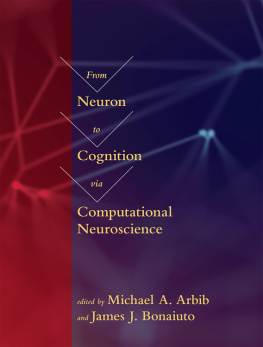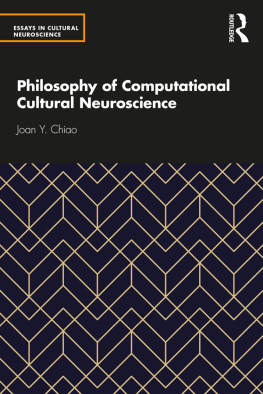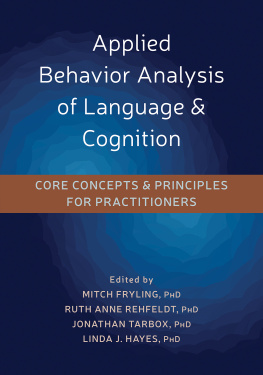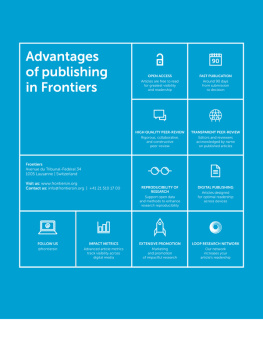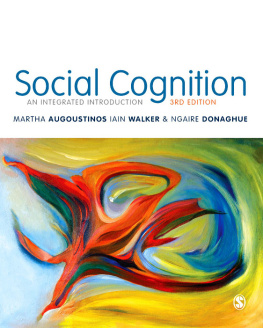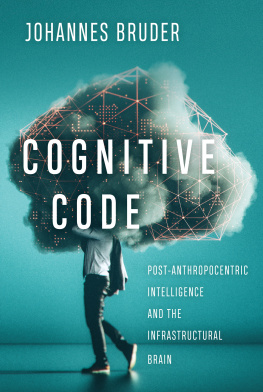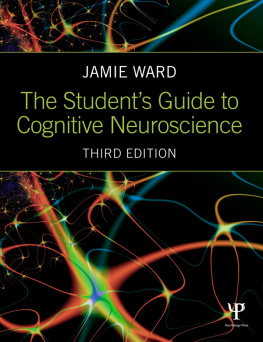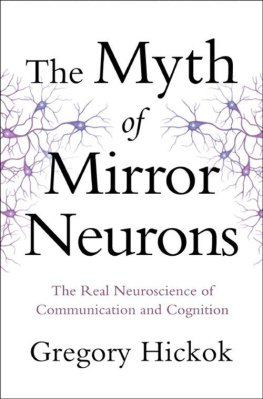Computational Neuroscience
Terrence J. Sejnowski and Tomaso A. Poggio, editors
For a complete list of books in this series, see the back of the book and https://mitpress.mit.edu/category/series/computational-neuroscience
From Neuron to Cognition via Computational Neuroscience
edited by Michael A. Arbib and James J. Bonaiuto
The MIT Press
Cambridge, Massachusetts
London, England
2016 Massachusetts Institute of Technology
All rights reserved. No part of this book may be reproduced in any form by any electronic or mechanical means (including photocopying, recording, or information storage and retrieval) without permission in writing from the publisher.
This book was set in Baskerville by Toppan Best-set Premedia Limited. Printed and bound in the United States of America.
Library of Congress Cataloging-in-Publication Data
Names: Arbib, Michael A., editor. | Bonaiuto, James J., editor.
Title: From neuron to cognition via computational neuroscience / edited by Michael A. Arbib and James J. Bonaiuto.
Description: Cambridge, MA : The MIT Press, 2016. | Series: Computational neuroscience | Includes bibliographical references and index.
Identifiers: LCCN 2016013116 | ISBN 9780262034968 (hardcover : alk. paper)
eISBN 9780262335263
Subjects: LCSH: Neurosciences. | Cognitive neuroscience. | Computational neuroscience.
Classification: LCC QP355.2 .F76 2016 | DDC 612.8/2330285dc23 LC record available at https://lccn.loc.gov/2016013116
ePub Version 1.0
Series Foreword
Computational neuroscience is an approach to understanding the development and function of nervous systems at many different structural scales, including the biophysical, the circuit, and the systems levels. Methods include theoretical analysis and modeling of neurons, networks, and brain systems and are complementary to empirical techniques in neuroscience. Areas and topics of particular interest to this book series include computational mechanisms in neurons, analysis of signal processing in neural circuits, representation of sensory information, systems models of sensorimotor integration, computational approaches to biological motor control, and models of learning and memory. Further topics of interest include the intersection of computational neuroscience with engineering, from representation and dynamics, to observation and control.
Terrence J. Sejnowski
Tomaso Poggio
Preface
From the middle of the nineteenth century onward, analysis of the brain has offered a rapidly increasing set of advances in the quest to understand how we come to know the physical and social world in which we are immersed. Neuroscience has become a very broad field indeed: each year around 30,000 researchers and students from around the world attend the annual meeting of the Society for Neuroscience (SfN), with talks and posters covering an immense range of subfields from the fine details of genetics and molecular biology via neurons, circuits, and brain regions to human cognition, neurological disorders, social interaction, and the ethical implications of research. This book seeks to introduce the reader to the middle range: from neurons, circuits, and brain regions to human cognition, with just enough subcellular details to enrich our insights into how neurons can work together to yield at times surprising results.
We trace a path from neuron to cognition via computational neuroscience, but what is computational neuroscience? The use of the computer is now ubiquitous in all fields of science, not just in neuroscience, for the gathering, analyzing, storing, archiving, retrieving, and synthesizing of data. However, we reserve the term computational neuroscience for the attempt to understand neural systems by developing models of the causal interactions which underlie the observed behaviors of these systems. Although some of these models may be purely conceptual, they will in general be formalized enough to be expressed mathematically. In some cases the resultant mathematical system can be understood by pure reasoning alone. More often, though, the formalism will be the basis for a computer program that can be used to run numerous simulations to explore the behavior of the system and thus assess to what extent the model gives us fresh insight into the actual and potential behavior of the neural (and, in some cases, embodied) system that it represents.
Computational neuroscience has another, perhaps more romantic, meaning that overlaps the model-centered perspective. Here the aim is to explore the notion that the brain is a computer without reducing the brain to a classic serial electronic computer, but rather in the attempt to open up the field of computer science (as has indeed happened to some extent in the last decade or two) to the notions of (1) cooperative computation: distributed as well as parallel, rather than serial, computation; (2) adaptive computation exploiting diverse forms of learning and memory beyond passive storage; and (3) an actionperception cycle in which computation is not confined to numerical and other formal structures but enmeshed in the demands of interaction with the external world via sophisticated sensors and effectors. The true aim of this book is to explore how the brain does it.
From Neuron to Cognitionvia Computational Neuroscience provides an integrated view of neuroscience with a computational flavor but with a real sense of the empirical data, bridging the divide that too often separates those interested in the details of how neurons work and those who wish to understand the brains contribution to cognition and behavior. It thus introduces the whole range of computational neuroscience from neurons interacting via synaptic processing to the behavior of networks and the modeling of higher order brain functions.
In this age of access to a dazzling diversity of readings, videos, and more via the World Wide Web, it may seem anachronistic to present a textbook whose confines can provide but a small sample of what those 30,000 SfN attendees are working on. However, that very diversity makes it hard indeed to establish a firm foundation on which to build ones own expertise. This book, then, will provide the student with the core knowledge on which to base future exploration, whether it be drilling deeply into some specialized area or thinking broadly to see the linkages between the topics we explore here and a whole range of other topics in neuroscience, artificial intelligence, robotics, cognitive science, and even philosophy of mind.
Who the Book Is For
Some readers will come to the book simply to learn what a chapter or two has to offer. Others will come to the book for an overview of how the brain works and plan to read most of the chapters but will skip many of the equations and other more technical details. If so, we think you will find the book valuable. However, this is a textbook, and it is designed to meet the interests and needs of the student taking a course based on the book and the instructor teaching that course. First, a quick word to the instructor. We imagine that you may have already done research on topics covered in a chapter or two in this book (but its fine if you havent) and have perhaps taught material covered in some of the chaptersas well as some topics not in this bookbut will also be teaching material that will at first be new to you. It is with you in mind that we have developed the Website. How to Use This Book and Its Website describes the tools the Website offerscomplementing the text with slides for lectures, a wide range of exercises, project suggestions, links to videos, suggestions for further reading, and access to the Brain Operation Database (BODB) and other neuroinformatics tools.
Next page
